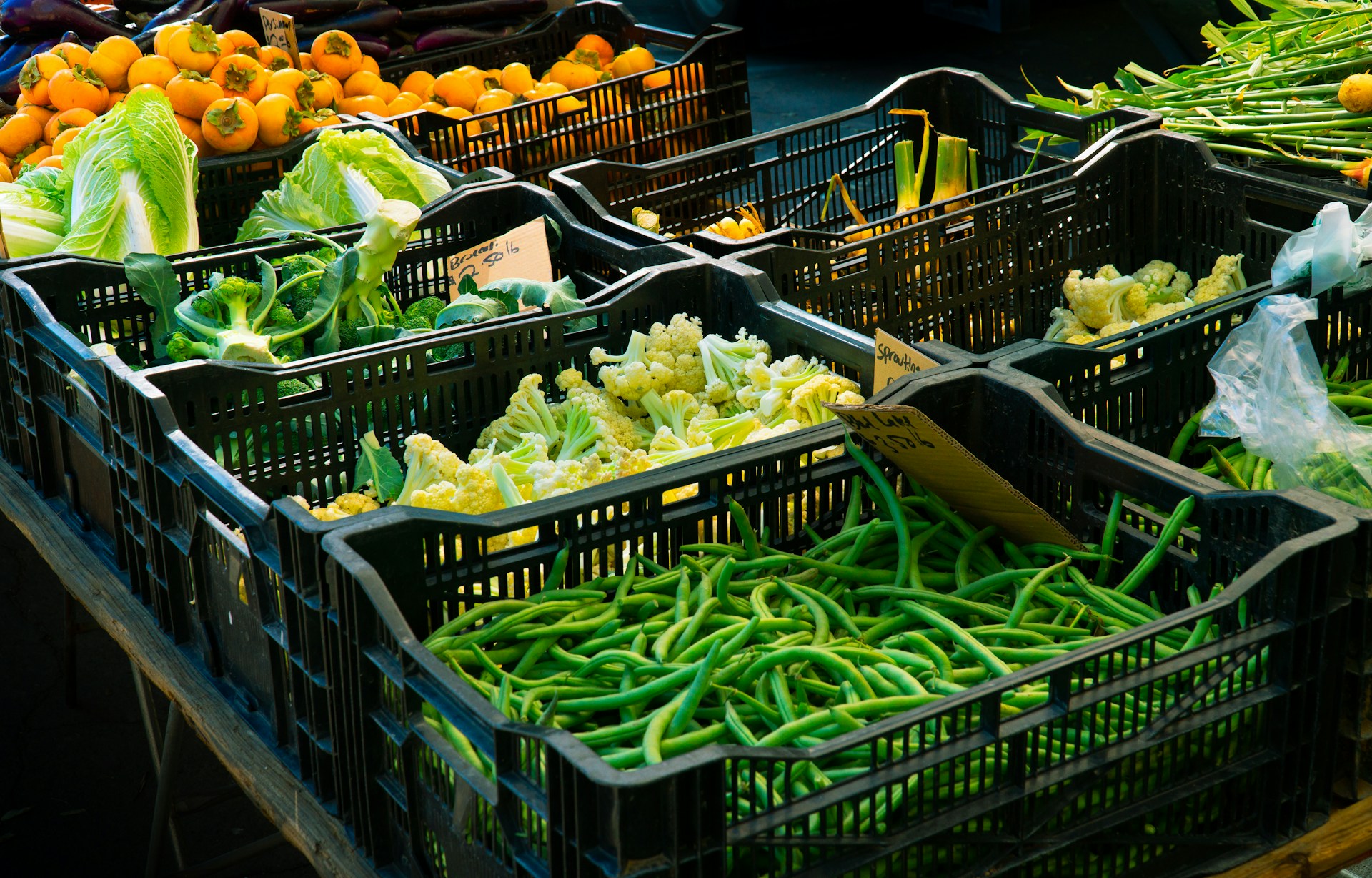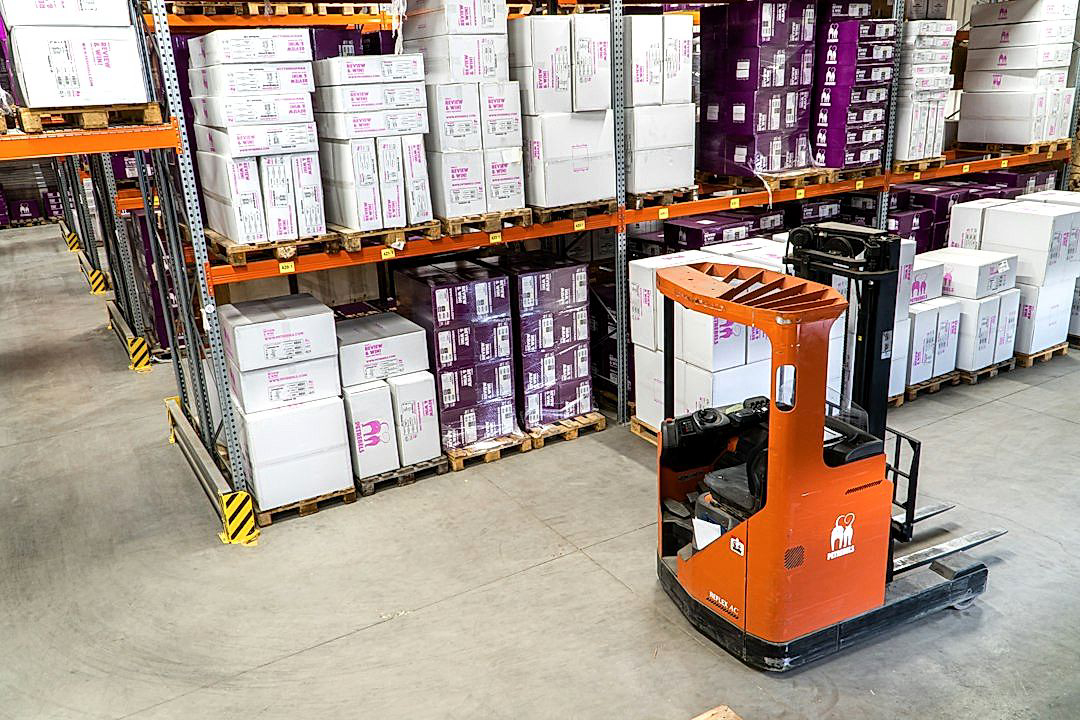In the world of produce distribution, efficient inventory management is not just a necessity—it’s a lifeline for operational success.
Balancing various factors such as freshness, demand forecasting, and seasonality can be quite the challenge.
It’s no wonder that achieving this balance becomes the primary focus for many distributors.
This pragmatic approach directly influences both profitability and customer satisfaction.
The lack of it can lead to substantial loss.
It’s on this premise that we delve into our topic—how to optimize your inventory for effective produce distribution.
Inventory Optimization Tips For Produce Distribution
1. Regularly Update and Maintain Inventory Records
The first key step in optimizing inventory in produce distribution is regularly updating and maintaining accurate inventory records.
This is essential as it allows distributor managers to have a clear image of what is available in warehouse stocks at any given moment.
The freshness and short shelf-life of fruit and vegetable products further elevate the importance of a swift and updated inventory system.
Inventory records play a significant role in avoiding overstocking or understocking, both of which can have detrimental effects on the business.
Overstocking can lead to substantial losses as produce may go bad before being sold, while understocking can result in missed sales opportunities and dissatisfied customers.
In this context, balance is everything – maintaining just the right amount of fresh produce on hand to meet customer demand without ending up with waste.
Maintaining updated inventory records also assists in identifying trends such as which items are selling faster and at what times of the year, facilitating efficient restocking plans.
Moreover, keeping track of any changes in supply conditions, such as seasonal availability or market fluctuations, is crucial for supply chain stability.
In order to efficiently update and maintain inventory records, utilizing automated systems can be significantly beneficial.
These systems can provide real-time updates, reduce manual input errors, and allow easy access to inventory data.
This data then becomes a dependable resource for making informed inventory decisions, such as when to reorder, how much to order, and identifying any discrepancies early.
Good record keeping in inventory management also allows for transparent product traceability, reassuring customers of the products’ freshness and quality.
This is especially relevant in the case of foodborne illness outbreaks, where clear and accurate inventory records can aid in tracking the source, limiting the spread, and facilitating quicker recalls if necessary.
Finally, investment in training for inventory management staff is also essential, as they need to understand the importance and process of regularly updating inventory records.
With clear and accurate inventory records, produce distributors are able to make more strategic decisions about their distribution channels and strategies.
Undoubtedly, regularly updating and maintaining inventory records proves to be one of the most effective ways of inventory optimization in produce distribution.
2. Organize Warehouse for Efficient Item Accessibility
Managing a warehouse efficiently requires more than just randomly placing items on shelves or in bins.
A key task is to organize the warehouse in such a way to maximize space utilization and ensure that items are quickly accessible.
The primary goal should always be ensuring that the most frequently picked or sold items are the easiest to reach.
In essence, strong organization within a warehouse significantly determines how quickly and efficiently orders can be picked and shipped.
For produce distribution, this is especially critical due to the perishable nature of the goods involved.
By ensuring items are easily accessible, waste can be minimized and products are delivered to customers in a timely manner.
This organization extends not only to the placement of items on the shelves but also the arrangement of the shelves themselves.
For instance, placing high turnover items closer to the shipping area can reduce travel time for warehouse staff.
Similarly, grouping items that are often sold together can also speed up the picking process.
Consider the feasibility of various warehouse layout designs to achieve optimum organization and workflow.
Moreover, proper warehouse organization also entails keeping your space clear and clean.
Regularly discarding old or unsellable produce can prevent unnecessary clutter and ensure that only viable products occupy your valuable warehouse space.
Proper labeling and signage are also essential in managing warehouse organization – it streamlines the process and aids easy navigation for the workforce.
Various technologies like barcode scanning and Radio Frequency Identification (RFID) can likewise be utilized for accurate and swift inventory tracking.
Overall, the organization of a warehouse is a critical endeavor that should be undertaken with planning and precision to ensure optimum efficiency in produce distribution.
3. Implement First-In, First-Out (FIFO) system.
In the world of produce distribution, inventory optimization is crucial for business success.
A particular strategy that is indispensable for optimal inventory management is the First-In, First-Out (FIFO) system.
The FIFO system is a method utilized by companies around the globe to ensure cost-effectiveness and preserve the quality of their perishable goods.
Essentially, it ensures that the oldest stock (first-in) is sold before the newer stock (first-out), thus decreasing the likelihood of spoilage.
In implementing the FIFO system, you promote better inventory control, ensuring that no item stays so long in the warehouse until it becomes a strain on resources due to spoilage or expiry.
During peak seasons, when inventory turnover is high, the FIFO system becomes even more beneficial.
It assists in decreasing waste, bolstering customer satisfaction, and the overall efficiency of the distribution process.
The application of the FIFO system is not just restricted to the physical operations in the warehouse, but could also be mirrored in the organization’s accounting records.
It’s a cornerstone of modern inventory management and, subsequently, the performance and sustainability of your produce distribution enterprise.
FIFO promotes optimal stock rotation and forms a lifeline for the produce distribution industry where freshness and shelf-life are of utmost importance.
Incorporating a FIFO inventory system into your warehouse operations can significantly reduce unnecessary loss, enhance efficiency and eventually bolster your bottom line.
It’s a principle that is simple to understand, and even easier to implement, being a foundation of orderly, structured inventory management.
Ultimately, companies that utilize the FIFO system properly can ensure that their products are always fresh, their losses to spoilage are kept to a minimum, and their customers are consistently satisfied.
By refining the chain of production, from field to fork, utilizing a FIFO system, you can work to ensure that only the best-quality produce reaches the consumer’s plate.
After all, the primary goal of inventory optimization is to ensure that resources are utilized judiciously in the quest to deliver high-quality products in a timely manner.
Implementing a FIFO system is, therefore, not just a task but a strategic maneuver that brings you one step closer to achieving this goal.
4. Use Software for Intelligent Stock Forecasting
For any business dealing in produce distribution, inventory optimization is a critical aspect to ensure smooth running and maximum profits.
One effective way of making sure this happens is the use of stock forecasting software.
Intelligent stock forecasting employs algorithms and predictive analysis to determine future stock needs accurately.
Given the perishable nature of produce, forecasting the right quantities to be kept in stock is of utmost importance.
Overstocking might lead to wastage, while understocking might lead to missed sales opportunities.
The stock forecasting software can take into account various factors such as seasonal demand, market trends, and historical sales data to predict future stock needs more accurately.
This aids in creating a balance in the stock levels, thereby optimizing the inventory.
Furthemore, the software can provide real-time tracking and updates on the stock levels.
This enables the management to react quickly to any changes needed, whether it is replenishing stock or slowing down purchases.
Moreover, a good stock forecasting software comes with dashboards and reports that provide a visual display of the stock situation, making it easier for useful insights to be drawn and timely actions to be taken.
By using stock forecasting software, the handling of inventory becomes efficient and the chances of stockouts or overstocks are significantly diminished.
This leads to a more effective management of the resources, which ultimately leads to increased profits.
For example, beneficial features like automated reorder points could be set in place using the software.
Such features ensure the stock levels never fall below the minimum required, yet also never exceed the maximum capacity, thereby optimizing the inventory perfectly.
Finally, using intelligent stock forecasting software ensures that the inventory optimization strategies are driven by data, thereby further increasing their reliability and effectiveness.
Clearly, intelligent stock forecasting software is an essential tool for successful inventory optimization in produce distribution.
5. Regularly Review and Adjust Reorder Points
One of the most critical tasks in the management of a produce distribution inventory is the regular review and adjustment of reorder points.
This process involves carefully examining the trends in product demand and making allowances for changes in market conditions.
By setting optimal reorder points, businesses can ensure they maintain an adequate supply of products while avoiding overstocking.
This strategy is not only cost-efficient, but it also significantly reduces the risk of spoilage, particularly important in produce distribution.
An optimally managed and adjusted reorder point ensures you always have just the right amount of stock at any given time.
To implement this, businesses need to consider several factors when determining their reorder points.
These factors include lead time, the time it takes for a supplier to deliver a product after an order is placed, and the purchased quantities, which can affect the costs of acquisition and storage.
Additionally, they should consider seasonal variations that might impact the demand for certain products.
Adjusting reorder points requires carefully monitoring all these factors and making necessary adjustments to maintain a balanced inventory.
It also requires a comprehensive understanding of your demand cycles to make accurate predictions and, consequently, optimal purchasing decisions.
Depending on the size of your inventory and the complexity of your distribution processes, this might necessitate the use of inventory management software.
These tools can not only provide a number of data-driven insights for setting reorder points but can also automate the reordering processes, further optimizing your inventory management.
Furthermore, they also offer integrations with other business systems such as finance, accounting, and ERP systems, considerably easing inventory management burdens.
Therefore, regularly reviewing and adjusting reorder points, while challenging, is a critical step in optimizing your produce distribution inventory.
This strategy can have tangible outcomes in terms of cost reduction, waste minimization, improved customer satisfaction, and ultimately, increased profitability.
By leveraging technological tools and maintaining a keen eye on market trends, produce distributors can ensure that they always have the right products in the right quantities, at the right time.
The Bottom Line
Optimizing warehouse operations and inventory management is pivotal for the success of any business handling physical products.
Keeping inventory records up-to-date and having an organized warehouse not only improves efficiency but also significantly reduces the chances of errors.
The implementation of a First-In, First-Out system helps businesses to maintain the freshness and quality of their products, while advanced software solutions can be instrumental in making accurate stock forecasts.
Regularly reviewing and adjusting reorder points ensures that stock levels always align with demand, preventing both product overstock and stockouts.
By integrating these robust practices, businesses can indeed enhance their operational efficiency, cut down on costs and more importantly, increase their customer satisfaction rates.




